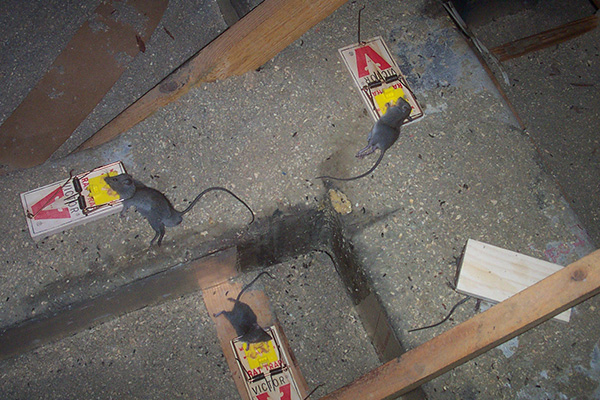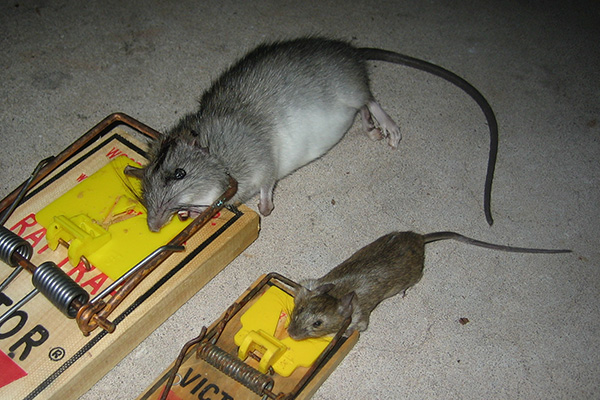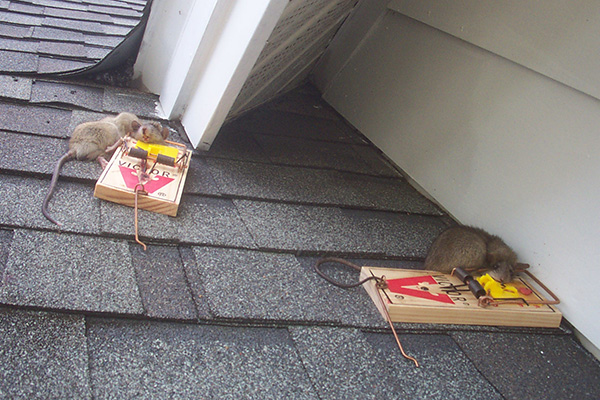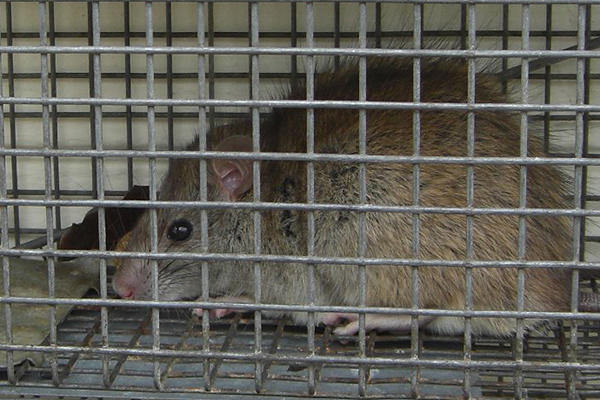- info@animalatticpest.com
- Call - we service 300 locations

How to Trap Rats - Rat Trapping Tips
Trapping is the most effective means of rat control. But it is only effective after the whole house has been rat-proofed: that is, all possible rat entry holes have been sealed shut with steel repairs. It is pointless to begin a rat trapping program if the house has not been sealed shut. First of all, new rats will continue to enter the house indefinitely as long as they can find open entry holes. Second of all, it is far easier to trap rats once those holes have been sealed shut. Rats are creatures of habit, travelling the same pathways over and over again - like rats in a maze! Once their normal exit/entry holes into the house have been sealed, they change their behavior and seek alternate territory, and seek alternate food. They are far easier to trap at that time. But what type of trap to use? You can purchase several styles and designs of rat trap. There are many types of snap traps, electricution traps, live cage traps, repeating live traps, glue traps, and so on. This site is focused on humane treatment of animals and effective solutions to problems. There is no way to humanely trap rats in live traps. If you block them out of your house, they are done for. They will not survive more than a few days outside, and will be eaten by predators. So it's pointless to live-trap them. It's also incredibly inhumane to use glue boards. Read about inhumane glue boards. The best trap is actually the old standard wooden snap trap. I prefer Victor brand. I have tested over 14 types of rat traps so far, and nothing is as effective as these original wooden snap traps. They can be set in high numbers, on the rat runways, the flat bottom holds them steady in insulation, and the pan tension can be adjusted to hair trigger. Nothing is better. Remember, the key to successful trapping is in sealing shut the house first, then in placing the traps directly on the rat runways second. Bait is of least concern - peanut butter, or a variety of foods, work fine. You actually don't need any bait at all. Read more about rat trapping and about the best type of rat bait.
Photographs of Various Rat Trapping Sets
Set The Traps on Common Rat Paths
Location is key - inspect inside the attic for rat paths - runways and tunnels in the insulation, marked with droppings. Set the traps in these areas of high activity.
What's the Best Rat Trap?
I've tested at least a dozen different types of rat trap in my career, and absolutely nothing is more effective than the old standard wooden trap with the yellow trip pan.
On the Roof Near Entry Holes
Yes, you can set traps near the primary entry hole into the house if you want. I rarely do this, because it's better to just seal the holes, but it can be an option.
Information and Tips About Rat Trapping
Rat Trapping Tip #1 Don't bother to set traps until every last entry hole into the building is sealed shut first. If openings remain, trapping is futile, and will never end.
Rat Trapping Tip #2 Use the original wooden Victor snap traps - there are two varieties, one with a small metal trip pan and one with a large yellow plastic trip pan. Use the yellow plastic one. It
has a higher catch rate and can be set more easily, with hair-trigger sensitivity.
Rat Trapping Tip #3 Bait the traps with peanut butter, smeared on the yellow pan. But truth be told, if you set the traps in the right location, you don't even need bait. But it does help a bit.
Rat Trapping Tip #4 Set the traps in areas of high rat activity - it's easy to spot in the attic. Just set the traps amidst all the droppings and rat paths you see.
Rat Trapping Tip #5 Check the traps often, at least every other day. This will keep you apprised of how the rat control project is going. In addition, you don't want to leave a dead rat on a trap
for too long, because it will start to decompose and attract flies and cause a tremendous odor.
Rat Trapping Tip #6 You can stop trapping after you catch no more rats and hear no more noise. If you've sealed the house properly, you will catch all the rats within 3 days or less. If you failed to seal
fully, then you'll keep hearing rat noise, which means you've got to inspect again and find the rat entry.
The Bottom Line
Trapping rats in the attic. Remember, do not set cage traps inside the attic. Mount traps to the entry/exit holes, or set cage traps bolted on the roof, in the shade. But the best strategy of all is to not even trap the rats at all! The use of a one-way exclusion door is usually the best, the easiest, and the most humane method. You can trap rats in the attic if you follow the correct approach. Best of luck!




